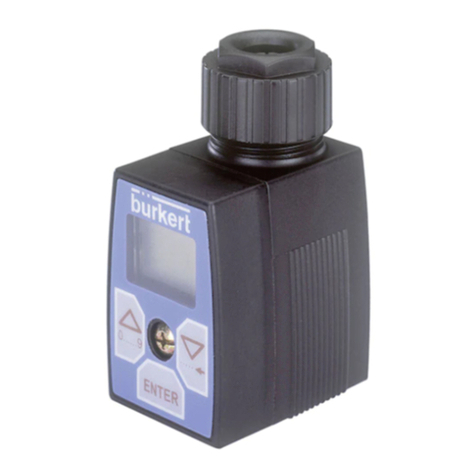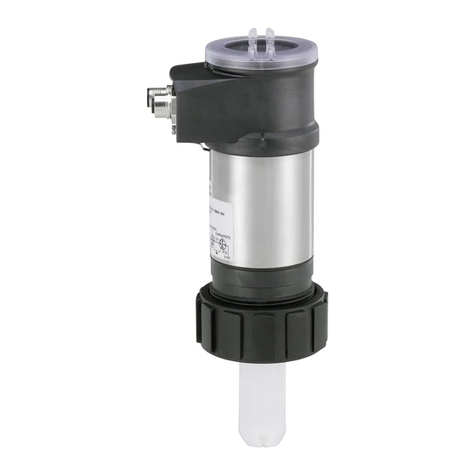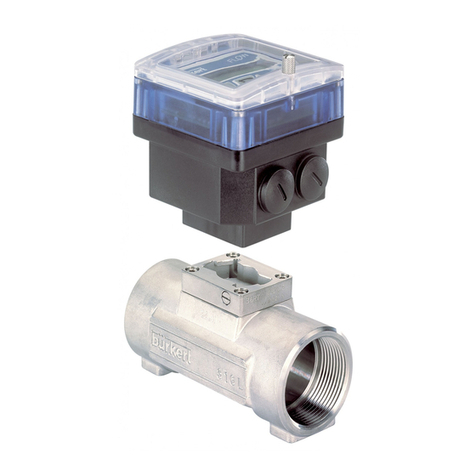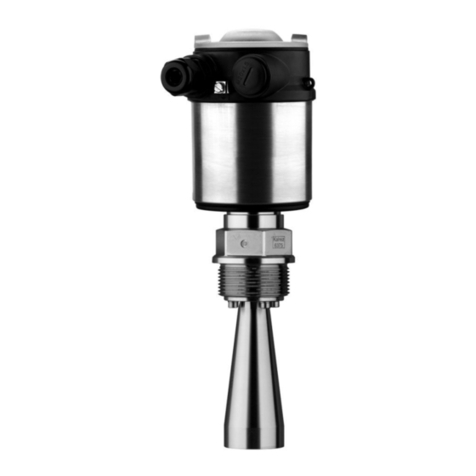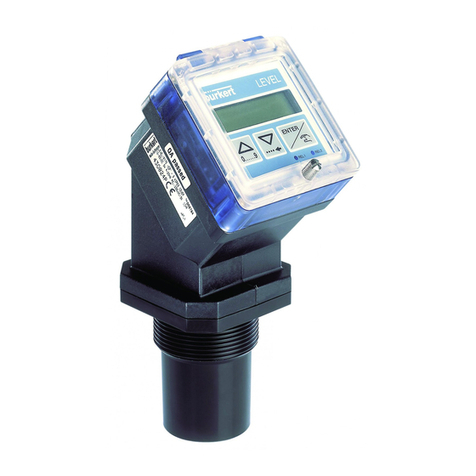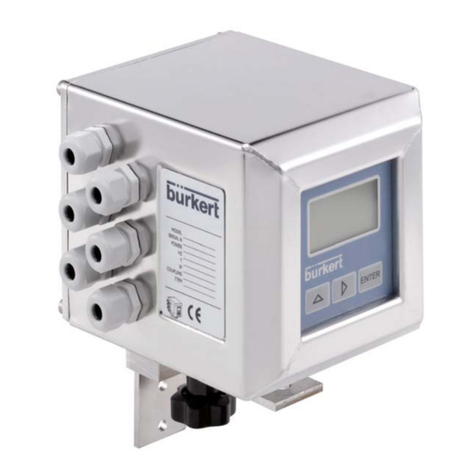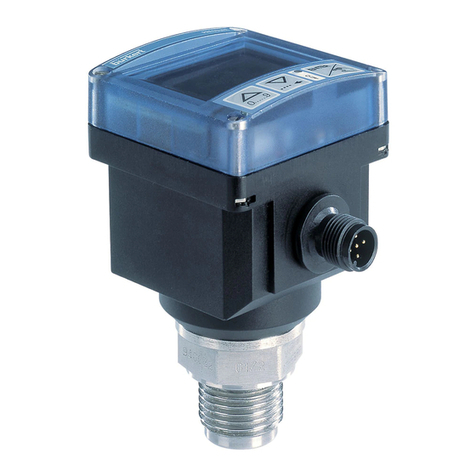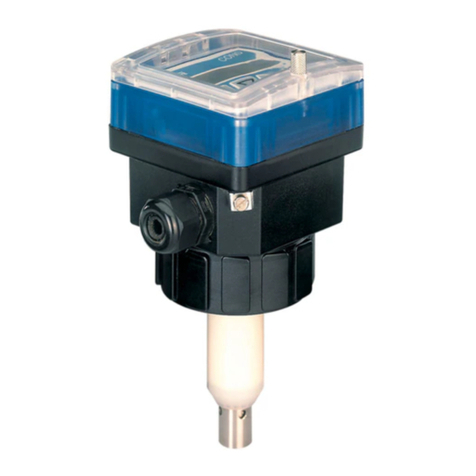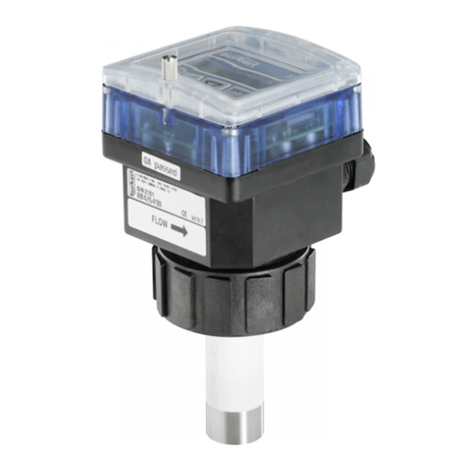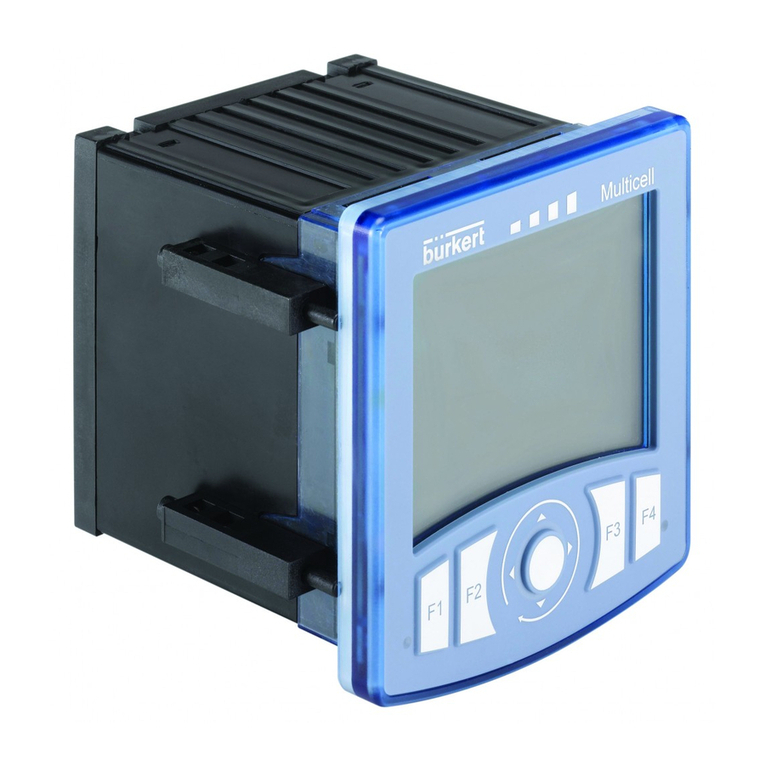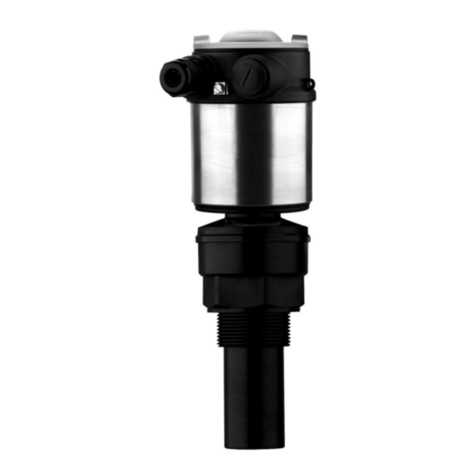Specications
Non-repeatability ≤ ±0.1 % of span
Temperature hysteresis 0.1 % of span at > 80 °C (176 °F)
Long-term drift (per IEC 61298-2) ≤ ±0.1 % of span
≤ ±0.2 % of span (with special measuring ranges and measuring ranges < 1 bar (15 psi))
Temperature error For calibration temperature 15 ... 25 °C (59 ... 77 °F)
–20 ... +80 °C: ≤1 % of span
–30 ... +100 °C: ≤1.5 % of span
For measuring ranges < 1 bar (15 psi), special measuring ranges and instruments with an
increased overpressure limit the respective temperature error increases by 0.5 % of span
Derating for cooling elements
■
Max. permissible ambient tempera-
ture
Tamb (Tmed < 125 °C) = 125 °C
Tamb (Tmed ≥ 125 °C) = –0.62 x Tmed + 202 °C
■
Max. permissible medium tempera-
ture
Tmed (Tamb < 80 °C) = 200 °C
Tmed (Tamb ≥ 80 °C) = –1.61 x T
amb + 326 °C
Tamb = Ambient temperature [°C]
Tmed = Medium temperature [°C]
Storage and transport conditions
■
Permissible temperature range –40 ... +70 °C (–40 ... +158 °F)
■
Maximum humidity (per IEC 68-2-78) 67 % r. h. at 40 °C (104 °F) (in accordance with 4K4H per EN 60721-3-4)
Climate class For indoor and outdoor use. Protect the instrument from direct sunlight.
■
Storage 1K3 (per EN 60721-3-1)
■
Transport 2K3 (per EN 60721-3-2)
■
Operation 4K4H (per EN 60721-3-4, without condensation or icing)
Vibration resistance (per IEC 68-2-6) 20 g, 10 ... 2,000 Hz (40 g, 10 ... 2,000 Hz for circular connector M12 x 1, metallic)
For instruments with cooling elements a limited vibration resistance of 10 g, 10 ... 2,000 Hz,
applies.
Continuous vibration resistance (per
IEC 68-2-6)
10 g
Shock resistance (per IEC 68-2-27) 100 g, 6 ms (500 g, 1 ms for heavy-duty connector)
Service life 100 million load cycles (10 million load cycles for measuring ranges > 600 bar/7,500 psi)
Free-fall test (following IEC 60721-3-2)
■
Individual packaging 1.5 m (5 ft)
■
Multiple packaging 0.5 m (1.6 ft)
■
PE bag 0.5 m (1.6 ft)
4. Specications of the transmitter 8325-S, ≥ 0,4 bar
Specications
Electrical protective measures The electrical protective measures are not valid for ratiometric output signals.
■
Short-circuit resistance S+ vs. U–
■
Reverse polarity protection U+ vs. U–
■
Resistance to overvoltage 40 V DC
■
Insulation voltage 750 V DC
Materials of wetted parts
■
Relative measuring ranges Measuring ranges ≤ 10 bar (150 psi): 316L
Measuring ranges > 10 bar (150 psi): 316L + 13-8 PH
■
Absolute measuring ranges Measuring ranges ≤ 1,000 bar (10,000 psi): ASTM 630 and 13-8 PH
Measuring ranges > 1,000 bar (10,000 psi): 316L + 13-8 PH
Materials of non-wetted parts
■
Case 316 Ti
■
Zero point adjustment ring PBT/PET GF30
■
Angular connector DIN 175301-803 A PBT/PET GF30
■
Angular connector DIN 175301-803 C PBT/PET GF30
■
Circular connector M12 x 1 (4-pin) PBT/PET GF30
■
Circular connector M12 x 1 (4-pin,
metallic)
316L
■
Field case 316L, 316Ti
■
Heavy-duty connector 316L
■
Cable outlet IP 67 PA66, PBT/PET GF30
■
Cable outlet ½ NPT conduit 316L
■
Cable outlet IP 68 316L
■
Cable outlet IP 68, FEP 316L
■
Cable outlet IP 6K9K 316L
CE conformity
■
Pressure equipment directive
■
EMC directive, EN 61326 emission (group 1, class B) and interference immunity (indus-
trial application)
■
EM eld 30 V/m (80 ... 1,000 Mhz)
4. Specications of the transmitter 8325-S, ≥ 0,4 bar

